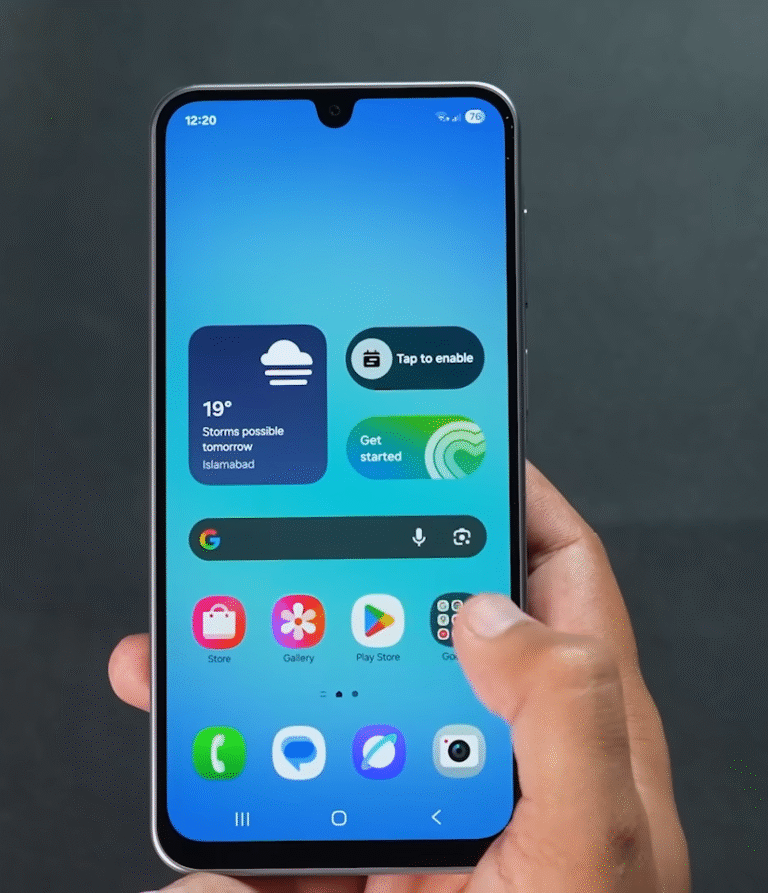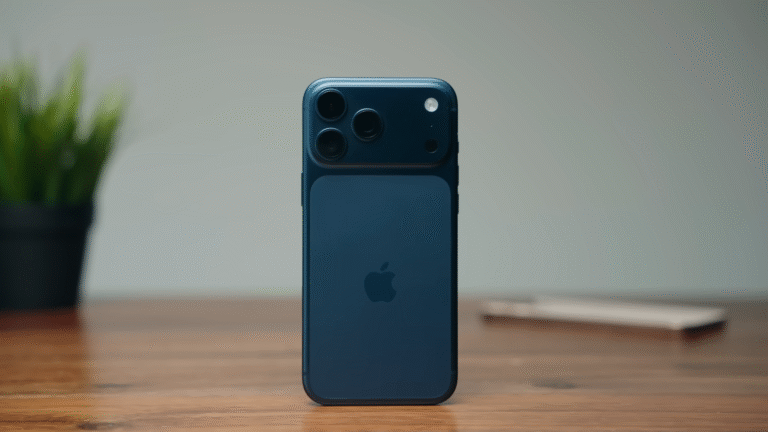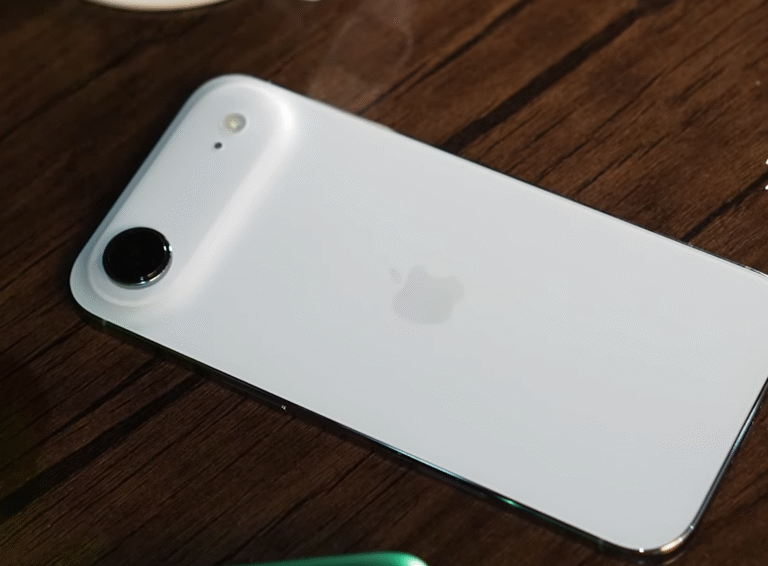In recent years, Pixel phones have become a more common sight. On a single walk through Toronto, I counted several people using them, which says a lot about how far Google has come in making the Pixel brand recognizable. Now, with the launch of the Pixel 10 Pro, Google is pushing harder than ever, backed by celebrity marketing campaigns and promises of a device built to last. But after using it as my daily driver, I came away with both admiration and frustration.
A Design That Stands Out
The Pixel 10 Pro is one of the most attractive phones you’ll see in 2025. The jade color with a gold frame is bold and refreshing compared to the usual safe shades on most flagships. It feels premium in hand and lighter than the iPhone 16 Pro, with a smaller punch-hole cutout that’s far less distracting than Apple’s Dynamic Island.
That said, I could live without the oversized “G” logo on the back and the glossy finish that collects fingerprints too easily. Still, in terms of design, Google nailed it this year.
Biometrics: Google Gets It Right
Google has quietly built the best biometric system on Android. The ultrasonic fingerprint scanner is fast and reliable, and when paired with Class 3 face unlock, it makes unlocking seamless. You can even set it to skip the lock screen, so the moment you pick it up, you’re instantly on your home screen.
The only caveat? Face unlock doesn’t work with sunglasses and isn’t great in low light since it lacks extra sensors. Compared to Apple’s Face ID, it’s a step down—but at least you have the option of a fingerprint reader, something iPhones still don’t offer.
Display and Audio: Subtle but Noticeable Upgrades
The Pixel 10 Pro’s OLED display is brighter than ever, building on an already strong panel from the 9 Pro. Indoors, you might not see much difference, but under harsh sunlight with Google Maps or while watching HDR videos, it truly stands out. The only trade-off is that shadows sometimes appear lighter, reducing the punchy contrast of last year’s model.
Google also doubled the dimming frequency, making the screen far easier on the eyes for those sensitive to flicker—bringing it on par with Apple and Samsung.
Speakers also see a small but welcome bump. They’re louder, punchier, and hold up well even at full blast without the distortion that plagued earlier Pixels.
Pixel Snap and Charging Experience
One of the most interesting hardware updates is Pixel Snap, Google’s version of MagSafe. It makes wireless charging and accessories click into place smoothly, clearly aimed at easing iPhone users into the Pixel ecosystem. The official charging stand looks great and is well-built, though I wish it had a second spot for earbuds.
Charging speeds are modest by Android standards—both wired and wireless—but compared to Apple, they’re still an improvement. It’s obvious Google is chasing iPhone switchers here rather than spec-hungry Android enthusiasts.
Performance: The Tensor G5 Story
Google’s new Tensor G5 chip feels like a mixed bag. On paper, benchmark scores are slightly better than last year’s G4, but GPU numbers are oddly low, and in some real-world cases, the Pixel 9 Pro performed better. HDR video streaming and video recording, for example, drained the battery faster and generated more heat.
On the bright side, casual tasks ran smoother and more efficiently. Non-HDR YouTube playback consumed less power, and games like Call of Duty Mobile performed well without overheating. Still, this is not a gaming powerhouse, and demanding titles will drop frames.
Battery life averages 7–8 hours of screen-on time, enough to get through a day but not class-leading for 2025. Overnight standby drain remains inconsistent, ranging from 3% to 7%.
For daily use—apps, browsing, multitasking—the phone feels smooth. But when compared to the latest Snapdragon or Apple silicon, the gap is hard to ignore, especially for a device Google promises to support for seven years.
Cameras: The Pixel’s Signature Strength
Ask anyone about Pixel phones, and the first thing they’ll mention is the camera. With the Pixel 10 Pro, that reputation holds strong.
Photos are sharp, reliable, and consistent, whether it’s your child sprinting around or capturing a once-in-a-lifetime trip. The 5x telephoto lens is particularly fun to use and delivers clean results. Google also added 100x zoom, but like Samsung’s implementation, it’s more of a novelty and heavily AI-driven.
Where the Pixel still lags is video. Despite Google’s bold claims at launch, the iPhone 16 Pro remains the benchmark for mobile video. Stabilization, shadow handling, and overall consistency are still better on Apple’s side. Pixel’s new Video Boost feature helps, but the long processing times make it impractical for everyday shooting.
Software and AI Features
The Pixel experience has always been about clean simplicity, and the Pixel 10 Pro continues that legacy. There’s no bloatware, no duplicate apps, and features like Now Playing, Call Screening, and At a Glance remain genuinely useful.
That said, customization is still limited compared to Samsung or even iOS. You can’t remove the Google search bar or At a Glance widget, which makes the home screen feel a little restrictive. The redesigned Quick Settings panel, however, is a step in the right direction, allowing users to resize buttons and fit more toggles on a single page.
AI is deeply integrated, with Gemini AI powering features like live translations, photography coaching, and Magic Q. While some of these tools show promise, most haven’t yet become must-haves. Magic Q, in particular, could be transformative in the future, but for now, it feels more experimental than essential.
Final Verdict: A Polished Pixel With Familiar Flaws
The Google Pixel 10 Pro is a phone full of personality. It’s beautifully designed, takes outstanding photos, offers smart software features, and guarantees seven years of updates. But it’s also held back by an underpowered chip, inconsistent battery life, and video performance that still trails behind Apple.
If you’re looking for raw power or blazing-fast charging, there are better options in the Android world. But if you value clean software, clever features, and a camera you can always trust, the Pixel 10 Pro delivers.
Google has long been called the “iPhone of Android,” and with this year’s push, it’s clear the Pixel 10 Pro is designed to lure iPhone users seeking something fresh. Whether it succeeds depends on how much people value simplicity and smart features over brute force specs.



